Alice In Chains are one of my favorite bands. Thanks to radio, they’ve been with me for a huge majority of my life, even longer than the Beastie Boys. Of course I had to talk about them in our least frequent, but most time-consuming and rewarding feature, EINthologies.
If you’re newer to the site, EINthologies was created so we could cover the works of big, influential bands, going through each or at least most of their releases to provide a bit of a guide for newer listeners that may wanna dive in. Objectively speaking, another reason why Alice In Chains is very worthy of such a feature – with six albums and a couple EPs, it’s a little whelming to get into, but not overly so that we can’t talk about them in this feature succinctly, though I say that as the most notoriously long-winded writer at this site. Sorry in advance to your free time.
For a brief intro, AIC are a quartet from Seattle, like a lot of great bands from this time. The classic line-up consisted of Jerry Cantrell on lead guitar and co-lead vocals, Sean Kinney on drums, Mike Starr on bass (who would be replaced by Mike Inez in 1993 for the foreseeable future), and, of course, Layne Staley on lead vocals with Cantrell as well as rhythm guitar. This line-up put out a couple of the best albums of the ’90s, as well as one of the best EPs and live albums of that decade. Single after single still get regular radio airplay today on your average rock stations. The band would go on an extended, but unofficial break in 1996, mostly due to extreme drug use and personal problems among the entire band. Staley became reclusive after the overdose death of his ex-fiancé, but still recorded the odd song or two under the AIC banner for compilation releases, or helping Cantrell with his solo album.
Staley was the first in the band to die in 2002 from a speedball overdose. Mike Starr would follow years later in 2011, also drug-related. Staley’s death turned AIC‘s break into a proper hiatus for four years, until they reformed in 2005 at the behest of Kinney for a benefit show, eventually recruiting William DuVall as the new singer and rhythm guitarist for the band in 2006. The rest, as they say, is history, though a history still in the making, since the band chugs along to this day.
Alice In Chains‘ power was primarily felt in their mixture of metal, grunge, and alt-rock sensibilities, incorporating some of the most poignant and heartbreaking lyrics delivered by the most evocative yarler in the game. To say they stood out would be a disservice to their influence and legendary status, one unfortunately cemented by the tragic death of Staley, much like the 2Pacs and Biggies before him. In a few days as of me writing this, it would have been Staley’s 53rd birthday if my math is right. In honor of that, and the sheer force of the band itself, let’s get into why they were so iconic – album by album, brick by brick.
As a quick note, although we’ll talk about the Sap and Jar Of Flies EPs briefly, we’re going to skip their debut EP We Die Young, as one of its tracks is on Facelift and that only leaves two others to get into. By all means, listen to it, especially if you’re a completionist or want to see their very first steps into music.
‘Mind of destructive taste
I choose to stroll amongst the waste‘ – “Sea Of Sorrow”
Alice In Chains were a band that metal fans vibed with, and Facelift was one of the primary reasons why. Grunge was taking the hell off in the early ’90s, though by this time it didn’t yet have that distinction. Where you had bands like Nirvana, Pearl Jam, and Soundgarden lighting up the mainstream with their own interpretations of the next big thing in rock, you also had Alice In Chains trying to do the same thing with one key difference: they were heavier than the rest.
At least consistently so, right? Metal was in a weird place with ’80s arena rock and hair bands aging out of rotation, so underground movements like black and death metal formed to put the danger back into it with thrash taking more of the popular forefront with giants like Metallica and Megadeth only building up more steam at this time. MTV was starting to pivot a bit, and rock was beginning to look like the sonic personification of a shrug. Alice In Chains strategically and expertly bridged a gap between metal and new grunge darlings, and – hoping this doesn’t sound too dramatic – single-handedly saved rock.
Facelift indeed. The ’90s were also a good time for tortured artists, and while I don’t wish to imply sick and/or troubled people make great art and their suffering is worth the cost for that art, it’s the symptom of a greater problem, and art happens to be a great outlet. So the curtain rises on AIC with a dense, uncompromising torrent of heavy rain from Seattle. If you’ve listened to rock radio literally at all in the last 30 years, you’ve very likely heard “Man In The Box” or “Sea Of Sorrow”. If you have, you know that the band broods, stewing in caustic emotions. This was by design, of course – whether natured or nurtured within the band is anyone’s guess, but the Pacific Northwest seemed to have an inert ability to turn out poignant, carefully furious artistic expression.
This was, after all, the band that would be invited to open for the likes of Anthrax, Van Halen, and Slayer. The cred was real from the beginning, and it’s not hard to see why with their heavy sound, even if some were… resistant to the idea. “We Die Young”, the first damn track, just smashes in with superb riffs and a ‘scary’ Staley really reaching into the back of his throat for some scratchy vocals. The song makes good on its name by ending abruptly and early (it’s only 2:31 long, dying young itself) before ratcheting into the slower, but more showy “Man In The Box”, a fan favorite single. Staley’s vocals reach for the sky here on the hook, Cantrell’s talk box makes its first of many AIC appearances, and everything feels deliberate and fresh.
Everything on Facelift just feels manufactured to knock you out, even when it’s not going at metal’s pace. The sound they were playing with was a bit more sludgy, dirty with the grime of a desert wasteland baked by the West Coast sun. In this regard, they were ahead of their time, since we wouldn’t come to prominently know sludge as a fully distinct cousin to heavy metal or doom metal for a while longer. Even then, you can’t put them in a box like that because they still wore their Seattle rock heritage on their sleeve, which gave way to awesomely bewitching tracks like “I Can’t Remember” or “Love, Hate, Love”.
In case you forgot when this album was made, “I Know Somethin’ (‘Bout You)” is quite keen to remind you, as it’s the most aggressively early ’90s song on the album with heavy metal riffs and some of the most disturbingly fun lyrics about drug addiction you can possibly have. It’s probably the least ‘original’ song on the album, but still packs a punch and it’s fun to see AIC play with more established tropes than they would elsewhere. It’s no wonder this album was the first grunge album to be certified gold, going on to double platinum status eventually.
Simply put, if you like your AIC heavy, then this is a good place to start. The production is delightfully nostalgic, it complements their sound well, and it shows a band with a youthful vigor they wouldn’t capture in the same way ever again. It’s also good if you prefer Layne to Jerry, since he sings lead throughout the entire album. This is the powder keg that sets the band on a track to wild popularity and renown that still rings true to this day, hence why I’m writing this at all.
‘Pictures in a box at home
Yellowing and green with mold
So I can barely see your face
Wonder how that color taste‘ – “Brother”
I won’t lie – I wasn’t really familiar with Sap until I began to undertake writing this feature. Somehow, even with the advent of Spotify and readily available music as a whole, this one always eluded me. It is without a doubt AIC‘s most interesting release. This is likely as objective as I’ll get during this feature, so enjoy it while it lasts.
The story behind this EP is different for sure. The band intended on writing a song for a movie called Singles. We would come to know that song as “Would?” off of Dirt, but they took advantage of the opportunity in the studio to demo several more songs, some that would make it on this EP and others that would also make it to Dirt like “Rooster”. Jerry called up some pals to see if they wanted to collab.
To my knowledge, this is the only Alice In Chains release to not only have what could be considered a star-studded features list, but also one of such a high profile for the time. Ann Wilson from Heart, Chris Cornell of Soundgarden and eventually Audioslave, as well as Mark Arm of Mudhoney all provide some backing vocals on different songs on Sap. Basically, it was Seattle versus the world in that studio, and the result was, like I said, interesting.
“Brother”, a track written by Cantrell about his brother living with his father when his parents divorced, features a somber mood, lovely harmonization, and a damn tambourine. Oh, and Ann Wilson, who backs up Cantrell’s own lead vocals (he was nudged a bit by Staley to sing lead more). It’s a subtle duet, one that probably doesn’t even properly qualify to be a duet, and unless you were a Heart superfan or knew Wikipedia exists, you’d be forgiven for not being able to pick out Wilson’s voice. Still, sonically speaking, it’s something new, and something that wasn’t really ever done again in this fashion by AIC. It’s couched in realism, and aside from the vocal effects on Cantrell’s voice during the verses, captures the first raw moments for the band. The memories and feelings that form these songs are practically tangible.
“Right Turn” features both Arm and Cornell, and is credited to Alice Mudgarden, an amalgamation of all three bands the members are from. It’s an acoustic ballad with Cantrell, Cornell, Staley, and Arm all trading off lead vocals before all harmonize in a grand outro verse with a ton of power. You can hear the strengths of each singer – they all complement each other, all hitting different ranges they’re comfortable with. “Am I Inside” is similar, steeped in loneliness and darkness, but incorporates some piano and brings back Wilson for some assistance.
There is apparently a hidden track at the end of “Am I Inside” called “Love Song”. I did not listen to it, but my journalistic responsibility uncovered that it’s a bit of a ‘joke’ song with all AIC members switching places – Starr on guitar, Kinney on vocals and piano, Staley on drums, and Cantrell on bass – and the lyrics leave… a lot to be desired, but it seems like they had a lot of fun. I’m all for bands embracing a less serious tone.
Working with just the four listed songs, I consider this a bit of an outlier for AIC. It’s nothing unusual or disparate for them, especially as they would grow to expound on this type of approach with Jar Of Flies, but you could feel the rawness in more than one way. Listen to this EP if you like any of the guests I mentioned and wanna see how they mesh with the band, or just like acoustic and heartfelt tracks that don’t get too dark.
‘Down in a hole and I don’t know if I can be saved
See my heart, I decorate it like a grave
You don’t understand who they thought I was supposed to be
Look at me now, a man who won’t let himself be‘ – “Down In A Hole”
I’ve said plenty of things about Dirt already in our A Scene In Retrospect feature covering it, most of them personal. I’ll leave most of that where it is – read it if you’re curious – but I will be pulling one quote directly from it because it’s still true: ‘The absolute pinnacle of not just Alice In Chains’ own catalog, but also mainstream ’90s music was 1992’s Dirt.’ It’s so monumental, Magnetic Eye Records are releasing a tribute to it in a few weeks, contributed to by fellow fans and musicians from all around the heavy music world!
Simply put, but to expand on that potential hot take of a quote earlier, this is the apex. Dirt has the grooviest guitars, it has the most pained lyrics, it has the most memorable writing, and, as a result, the most singles. Whether it’s “Rooster”, the hazy, slow-burning ode to Cantrell’s Vietnam War vet father, the superb and heavy metaphor for anger “Dam That River”, or any other song on the tracklist, they’re all top notch. Every other album featured here has a song or two I’m liable to skip if I’m wanting to get to the really good stuff – not Dirt. Everything hits, and it hits hard.
This is also the only Alice In Chains album I own on CD, from back in the ’90s when I got it. It’s… somewhere around here. Much like Facelift, the sound AIC conjure here is very nostalgic, just more focused and raw – cathartic at best, prophetic and hopeless at worst. About half the album directly confronts addiction, something the entire band faced around this time, along with other ailing livery that humankind gets draped in like anger, love, and death.
Picking a favorite is nearly impossible, but I can tell you that “Them Bones” is one of the most urgent, door-breaching opening track I’ve ever heard. A song about the inevitability of death bringing Dirt to life may be ironic, but the whole album is utterly marked by it. Take “Rain When I Die” for instance, one of the best tracks on the album. It’s a sludgy, deserty drudge through the canals of toxicity that can easily be interpreted as the lamenting of a crumbling relationship or a budding drug dependency. Love dies, drugs kills – no matter how you slice it, it’s absolutely ominous and no amount of sick-ass guitars can bury the feelings, though you can’t blame Cantrell for trying with one of the best wah-dipped riffs in his career on here. Eerily enough, it did actually rain on Staley’s estimated day of death (his body was found about two weeks after he died, hence the estimation), though you could also chalk that up to normal Pacific Northwest weather.
If you’re on the younger side of things and weren’t exposed to much ’90s music growing up or since, Dirt functions as a relic to what drove people in that time. Though not unique to that decade, the ’90s felt raw, clotted with dirt and dried in the beating sun as it wiggled in the sky, waiting to lay mirages at our gullible feet. It’s the soundtrack of my near-sepia-tinted memories for many personal reasons, but it’s a mood that I think is universally felt as well. It’s also the most musically approachable by far, dark themes be damned. This album was AIC at their best musically, worst humanly, and that alone makes it a pillar of excellence all things considered.
‘Yeah, it’s fine, we’ll walk down the line
Leave our rain and cold, trade for warm sunshine
You, my friend, I will defend
And if we change, well, I’ll love you anyway‘ – “No Excuses”
You like grunge? You like blues? You like acoustic guitars? Then flick your BIC lighter, hold it in the air, and read on, because Jar Of Flies is one of the best releases in Alice in Chains‘ discography.
This sizable EP – seven songs, 30 minutes – is rife with emotion and a new side of AIC that wouldn’t be further explored aside from their Unplugged live album for MTV. I still get chills listening to it to this day. It wasn’t a project born out of intention either – the band literally just went into a studio to mess around with an acoustic guitar. Their label at the time liked the result so much, they wanted to put it out. Good on them since it was the first EP and AIC project to hit number one on the Billboard 200.
During this time, the band was really starting to get fractured from drug use and other interpersonal problems. Before recording this EP is when Mike Starr left. The band said he wanted to spend more time with his family and not tour as aggressively as they were, but Starr said he was kicked out for his drug problem. Either way, that turbulence shows itself well in the energy of Jar Of Flies, albeit maybe not in a way you’d expect.
Coming off Dirt especially, which was heavy as hell, this EP feels vulnerable in a more relatable way. Broken, but not defeated. The lyrics and themes are a little less suggestive, and for the first time it really feels like the band is performing inwardly. What I mean by that is they are singing and playing in a way to reflect how they feel toward each other – in other words: group therapy to a degree. New bassist Mike Inez (who has also worked with Ozzy Osbourne, Heart, and Black Label Society) slipped right in with the rest of the guys, even as they embarked on an experimental journey they didn’t even know they were taking.
Song by song, there’s a gentleness that’s unparalleled in the AIC discography. Sap explored slower, more pensive songs before, but ended up standing out for different reasons, at least to me. Jar Of Flies was the apex of this sound for the band, spawning undeniable hits like “No Excuses” and “I Stay Away” as well as deeper cuts that became live mainstays, like “Nutshell” or the jazzy set piece that ends the EP, “Swing On This”. It also has the band’s best instrumental track with “Whale & Wasp” (not that there were many to choose from anyway).
In totality, Jar Of Flies feels a little bleak at times. It’s the sonic manifestation of running away from your problems, knowing hiding isn’t an option. Likewise, it also personifies failure in the presence of an understanding and comforting audience, one who may share in the destruction but always tries to help pick up the pieces. An intervention, if you will, but one that won’t stick long-term. If you’re not an EP person, this is still very much worth a listen. It’s more like a mini album, really. This is AIC unmatched – lightning in a bottle, or rather, a jar.
‘Dear God, how have you been then?
I’m not fine, fuck pretending
All of this death you’re sending
Best throw some free heart mending
Invite you in my heart then
When done, my sins forgiven
This god of mine relaxes
World dies, I still pay taxes‘ – “God Am”
Alice In Chains‘ most doom-laden affair, in more ways than one. It was fitting that they named this album after themselves, as it was the most viscous, downright unhealthy personification of them. It didn’t define them, they defined it – if that’s even an important distinction to make.
This album is elephantine and burdensome, though not entirely stylistically. I mean, don’t get me wrong, this takes very liberal dips into doom metal, and a deeper saturation of sludge is definitely present in places, but what I mean is that there’s just an almost unbearable weight here. Thematically, it’s laced with death; sonically, it’s turbulent, to match the aforementioned themes. Nothing here really feels ‘right’, and there’s a couple reasons for that. Cantrell said it best in a piece for Noisey:
‘There’s a sadness to that record—it’s the sound of a band falling apart. It was our last studio record [to that point]. It’s a beautiful record, but it’s sad, too. It’s a little more exploratory, a little bit more meandering. It’s not as crafted as the rest of our records were.‘
This is simply the effect, but what were the causes? Well, after Jar Of Flies, Staley entered rehab for his increasingly debilitating heroin addiction. After leaving (it’s a little unclear if he ever completed the program or left early), a big-ass tour was scheduled in summer of 1994 with Metallica, Danzig, Suicidal Tendencies, and Rob Halford’s Fight. The day before the tour was set to begin, the band called it off, as Staley had succumbed to his addiction again – a relapse that would set the band in a hiatus status and lay the groundwork for what we hear on this self-titled LP.
Couple this with some record label issues of rushing the production of the album and such, and you have the band’s most tumultuous effort. It did, however, continue a developing spiral downward into gloom and pain. “Sludge Factory”, while it could easily reference their tonal style on much of the record, strikes out at the label issues they were having, with vocals taking on an off-kilter lilt between verses. All the riffs on this album don’t have quite the same catchy, metallic fervor they had on Facelift or Dirt – they were repetitive and chugged out, as if representing the head-meets-wall attitude the band had with each other at the time, fighting to stay a unit, to keep churning out worthy art (or sludge like a factory).
The big single from this album was “Again”. It’s profoundly grungy, a kind-of return to roots, but it all sounds twice-baked and much grittier than before – the kind of grime that only intense personal struggle could manifest, and keep in mind this album came out after Dirt. Coming off of Jar Of Flies and how great that was, you may have anticipated more of a lean toward that sound, and who knows, maybe that was the plan originally, or maybe there’s some of that stuff on the cutting room floor. Instead, we got more bluesy tracks like “Heaven Beside You”, another single, but one that didn’t get as much attention as “Again”. “Shame In You” is a biting but earnest look at depression onset from drugs, and foreshadows how they were a precursor to Staley’s eventual isolation in the years to come:
‘When I waken and I’m aching, time for sleeping, yeah
When I’m saying time to go and I’ve been hurting, yeah
When I’m laying, I’m still trying, concentrating on dying, yeah‘
This is the hardest AIC release to look back on with hindsight, knowing the struggles the band went through, and knowing what ultimately became of Staley as a result. The whole thing just feels cruel in retrospect. It’s the last album with the then-current line-up, and things only seemed to get worse from this point on for everyone involved… until it got better. Alice In Chains (sometimes called ‘The Dog Album’ or ‘Tripod’ for obvious reasons) is a tough recommend, but if you listen to it, I recommend doing it after Facelift and Dirt in order. Then you can see the progression (or, in some ways, regression) of the band, feel their increasingly heavy souls bared on record, and learn the history of what became of one of the greatest bands of the ’90s.
’90s.
‘Hope, a new beginning
Time, time to start living
Like just before we died
There’s no going back to the place we started from‘ – “All Secrets Known”
This was it. A return, but to what? The sheer existence of AIC post-Staley is something of an enigma. What could easily have been a cash grab – a way for Cantrell and the other surviving members to pay the bills – became a prolonged, evocative tribute to nearly everything the band stood for in the ’90s. Not only that, but they were back with a new member: William DuVall (Comes with the Fall, Giraffe Tongue Orchestra, Neon Christ, etc.). I, like many others, felt a deep attachment to Staley and his work, even at a younger age when I really couldn’t comprehend the magnitude and pain in the music, which led me to dismiss this reformed AIC early on. It just didn’t sound the same.
The band felt that pressure as well. Cantrell stepped up and did lead vocals for nearly the entirety of Black Gives Way To Blue – a good call, because at least he was familiar to fans for nearly two decades. DuVall would ease into his place with the band, providing backing vocals and harmonies. He only sings lead on “Last Of My Kind”, a standout track that showed us that not only could he keep up, but start building his own way. He was his own musician, not looking to necessarily fill the vacuous hole that Staley left on a literal level, much less try to be him. He was himself, which was something the band says drew them to him in the first place when he formally auditioned to be in AIC after playing live with them and Cantrell on solo tours.
Anyway, the music. Is it good? Of course it is. In many ways, this feels like a natural progression for AIC, but with some deeper commitments to their heavier proclivities. Ever since their last album in 1995, music really got to work with trying new things, branching off, and establishing genres that are commonplace among underground scenes nowadays. Whether purposeful or not, Black Gives Way To Blue incorporates some truly thick, sludgy sections to sink into. A favorite from the album, “Acid Bubble”, is a creeper with lethargic instrumentation, but gives way (hah) to an enormous midsection of dense, heavy-ass riffs that you’d most likely find in melodic stoner or sludge metal bands. It’s not out of character – we’ve gone over many a heavy moment in AIC‘s career – but it’s evidence of an evolution and adaptation for them.
Maybe it’s all of the hindsight I’ve acquired in the decade since this album came out, but I can’t hear the intro riff of “All Secrets Known” and not hear the start to a progressive metal anthem rife with atmosphere. I can’t hear the guitar melodies in “A Looking In View” and not think of dense, classic doom. “Check My Brain” incorporates some of that dissonance from their self-titled album, but made more digestible as a powerful riff to shoot the song forth with the help of one of the best hooks on the album and great drum work from Kinney. The hiatus of the band clearly did nothing to calm them down; on the contrary, they seem to carry the weight of their past heavily on their shoulders, but every song heals just a bit more than the last.
If you’re into the lighter touches of the band, then “When The Sun Rose Again” will tickle your acoustic cravings. “Your Decision” embarks on a similar trip, but beaches itself in favor of growing into a rocking ballad, much like “I Stay Away” from Jar Of Flies. The title track at the end is the sullen cherry on top, being a heartfelt tribute to Staley featuring Elton John on piano and some heart-wrenching lyrics:
‘I don’t wanna feel no more
It’s easier to keep fallin’
Imitations are pale
Emptiness all tomorrows, haunted by your ghostLay down, black gives way to blue
Lay down, I’ll remember you‘
If you’ve made it this far in life without sampling DuVall-era Alice In Chains, Black Gives Way To Blue is a good a place to start as any other, especially if you remain skeptical. You may hear some fans call it the weakest album in the band’s catalog, but a statement like that takes on a new meaning when all of their albums punch like a two-ton gorilla. There’s a ton of magical moments here, nothing feels forced or unbecoming for a band of this caliber, and it’s the start of something beautiful and new. If you like the driven side of AIC, or just like great heavy rock that aggressively flirts with metal, this is where you need to be. This is some of the heaviest overall instrumentation you’ll likely hear out of them.
‘What makes you want to carve your initials in me?
Rained and weathered, erasing, hard to read
Find me distant, outwardly rough, obscene‘ – “Stone”
This is the weirdest AIC album to talk about. It’s simultaneously very grunge and not at all grunge. It continues where Black Gives Way To Blue left off and hits a lot of similar angles, but also moves in some different directions that feel new and uncharted. Ever since the band settled into their more multifaceted ways years prior, even through a hiatus, you expect certain things from each album. The difference with this revived Alice In Chains and this album in particular is how wide they were willing to go in achieving that spread each time. From many lights, AIC have hardly been a ‘safe’ band. Approachable and likable to most, yes, but not necessarily safe. Still, stagnation can creep in when trying to check off some boxes, even when trying to make some unexpected left turns – case in point: The Devil Put Dinosaurs Here.
Going from song to song, you risk a bit of tonal whiplash. With most other bands, this would come off disjointed, maybe trying too hard, but you know AIC are going to hit on several motifs. The only question is how, and how hard? The harder stuff on this album has a Mastodon feel to it, just slower – between DuVall and Cantrell, they even sound a little like Brent Hinds’ droning vocals at times. “Stone” has the best bass work ever produced by them (all due respect to Mike Starr, but Mike Inez is a great fit), and some of the catchiest, sludgiest guitar work period of modern-era AIC. It’s definitely the “Acid Bubble” of this album – a standout of epic proportions, and one of a few go-to songs if you want to get a naive metalhead into this band.
“Hollow” is another great opener with pounding riffs, slamming drums from Kinney, and lovely vocal harmonies from DuVall and Cantrell. “Voices” is the grunge anthem of this album, but plays things a bit lighter than usual. “Phantom Limb” deserves some shine for being the one song written in part by DuVall and also being one of the more haunting tracks on offer. The only thing you may miss here is a bit of the softer acoustic side – “Scalpel” scratches that itch, as does some of “Voices”, but that’s about it.
While lyrical themes have mostly been of an interpersonal and introspective nature – often relating to drugs, yes – this album has some sociopolitical commentary. In particular, the title track is critical of religion, specifically the hypocrisy some of the more harmfully devout can exhibit:
‘I am wise and you don’t know
A cloud is my home
Only some get in
Got an imaginary friendThe devil put dinosaurs here
Jesus don’t like a queer
The devil put dinosaurs here
No problem with faith, just fear‘
While much of the lyrics are a sarcastic condemnation of this attitude, the ending line of the chorus is more of a disclaimer of sorts. Cantrell expounded on this a bit in an interview with Noisecreep (no relation, but hello, fellow noisers): ‘When you’re teaching people that being gay is a mortal sin, yet a good portion of the people teaching this are fucking kids, there’s a huge problem.’ Maybe it’s a tad on the edgy side, but Cantrell admits the band never purported to be eloquent experts on the subject, just observers: ‘No one in the band claims to be an expert on religion, but the title of the song comes from something that a lot of people actually believe in.’
Anyway, also at Cantrell’s own admission, this is the most different album Alice In Chains produced, and it shows in very particular ways. In others, it’s fundamental, almost rudimentary. Not bad by any means, but perhaps the hardest sell of the DuVall-era material. It continues and begins to form a trend of looking at heaviness and darkness from a new lens, tries some new things, and mostly succeeds with them, but it still comes off as a slight retread in some ways. This is probably an album you want to dig into after you’re more acquainted with this permutation of the band from listening to Black Gives Way To Blue, or the next and final album of our discussion…
‘And you’re gonna fall out
You’re gonna break down, choke, and cry
Waiting out the storm ’til the skies are clear to fly‘ – “Fly”
I was lucky enough to review this album when it came out almost exactly two years ago. Again, I’ll leave most of those sentiments in that review – suffice it to say it was a very positive and personal one.
Rainier Fog is AIC‘s first album after Staley died that really had it all with no squandered potential. Clearly I was able to enjoy the previous two albums, but this was different. As much as I love AIC‘s heavy side, and that’s a lot, there’s something absolutely captivating about their gentler side. You get a good amount of both here, but everything overall feels more at ease, more tranquil, more… at peace. The band were in their 50s now – short for DuVall who was just a couple weeks shy at the time of release – and it was starting to show. Not in a washed-up manner, but in a way looking to reflect on an eventful couple decades with the wisdom of a father whose hardest years may be behind him, but knows there’s a lot left to learn – and feel.
Without being too preachy, that’s kind of the angle most of these tracks hang from. A wider range of emotion is explored here on Rainier Fog – I wouldn’t call them wholly positive, but… realistic. Learned, wise, the kind of experience that yields genuinely good advice for someone entrenched into their own hard times. Somewhat subtle callbacks to their past appear on songs like “Deaf Ears Blind Eyes”, which has Cantrell and DuVall harmonizing in a darker way. The instrumentation is markedly slower, but not full-on wading like you may be used to hearing in songs like “Confusion”. “So Far Under” on the other hand kind of kicks you back in the muck a bit. The chorus is dense and chilling with its downward momentum. Classic AIC, flirting with some doom tendencies.
A more specially vulnerable side appears in a couple songs. “Maybe” is a bit of a ballad with tried and true acoustics and a somber chorus. There’s even some time for a capella at the start of each verse which is different. “Fly” is just a trip, sounding like one of the songs from Jar Of Flies, but evolved. It has a bluesy soul and those AIC-as-hell washy guitars – something you could easily see pervading the mainstream, so much so that I have to ask why they didn’t release it as a single or make a video for it.
Speaking of videos, though, the title track did get some visuals, and it’s a fun one, referencing the region’s old Rainier Beer commercials. Looking at the forward-facing image that AIC cultivated throughout the years, ‘fun’ wasn’t exactly a word you would use often to describe them, but this is a sincerely earnest moment of the band enjoying the hell out of life and loving what they’re doing.
Likewise, a lot of the music on this album feels anthemic, triumphant after acknowledging and crossing the pitfalls life placed in front of them. If you like your Alice In Chains calmer, but still appreciate those borderline unsettling jolts of darkness here and there, this is where you wanna be. It’s a great album, probably my favorite of this new line-up if only for how genuine it feels. This is where I feel the quartet fell into their place, reborn and renewed for another however many years they’re willing and able to give us.
So… that’s it. Of course, I say that after writing 6,000 words in about a week’s time on one subject. It’s like college all over again, but fun. While I’m not the biggest fan there ever was, Alice In Chains were and still are an immovable force in my life, from my youngest formative years to navigating my post-twenties. Their story is tragic – I’m lucky enough to have never personally dealt with drug issues – but there’s a song for every mood. If you want hope, you find flecks of it littered throughout Cantrell and Staley’s crooning. If you’re down in your own hole, you’ll find solace that you’re not alone with the defeated tones in many of their other songs. They’re a profoundly human band in so many ways.
Most of all, they helped shape my musical taste, priming me to get into heavy music as I grew older and my musical avenues expanded. They are likely the reason why I took to sludge metal so well and continue to actively seek out interesting and fun bands in the genre.
I’m so glad to see the band continues to flourish, moving forward from the ashes of their past but with a great respect for what they experienced, lost, and survived. That’s nothing to balk at. If anyone from Alice In Chains happens to read this (I know, unlikely), I just wanna say thanks.
RIP Layne Staley
1967 – 2002
RIP Mike Starr
1966 – 2011





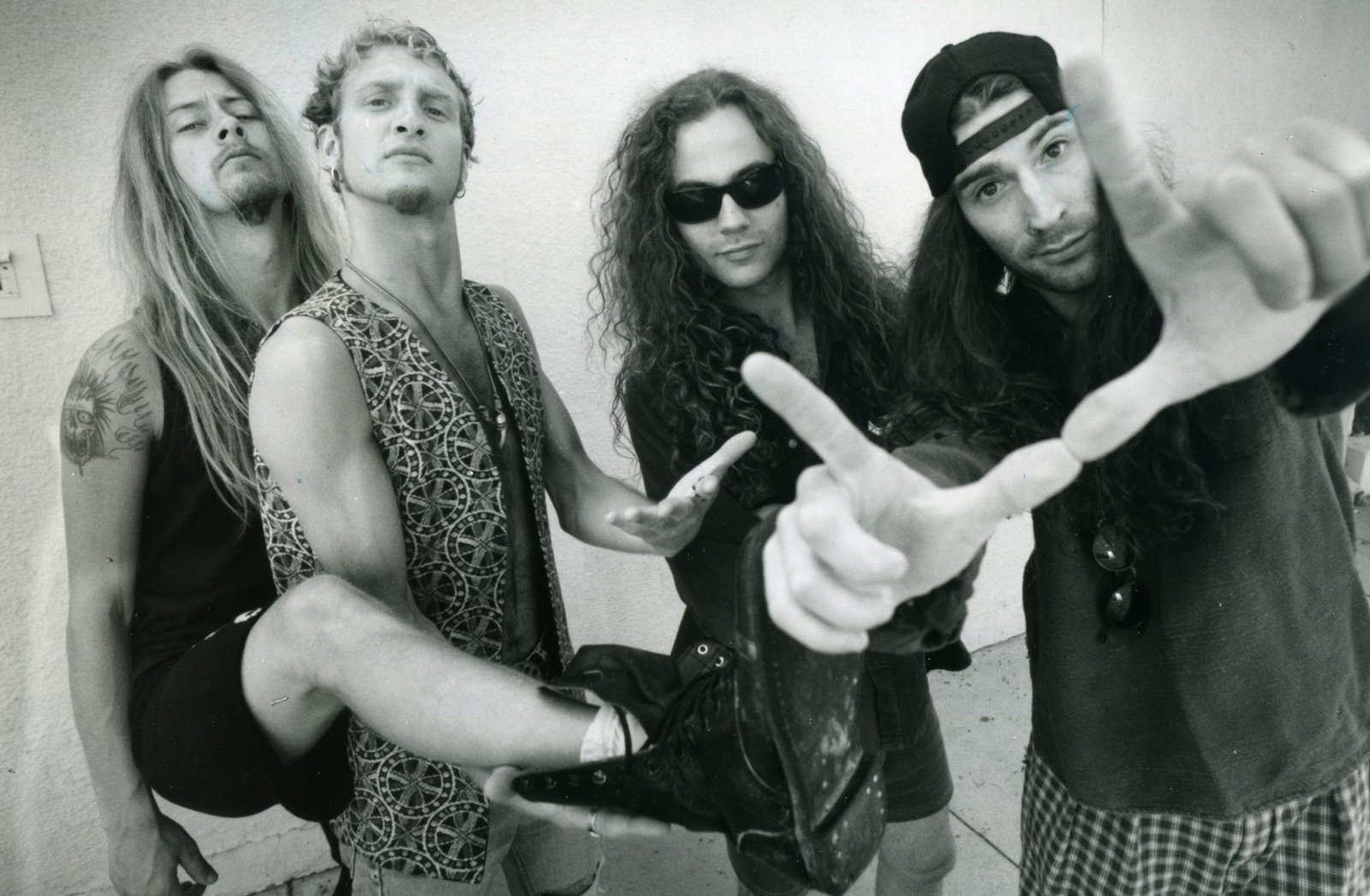
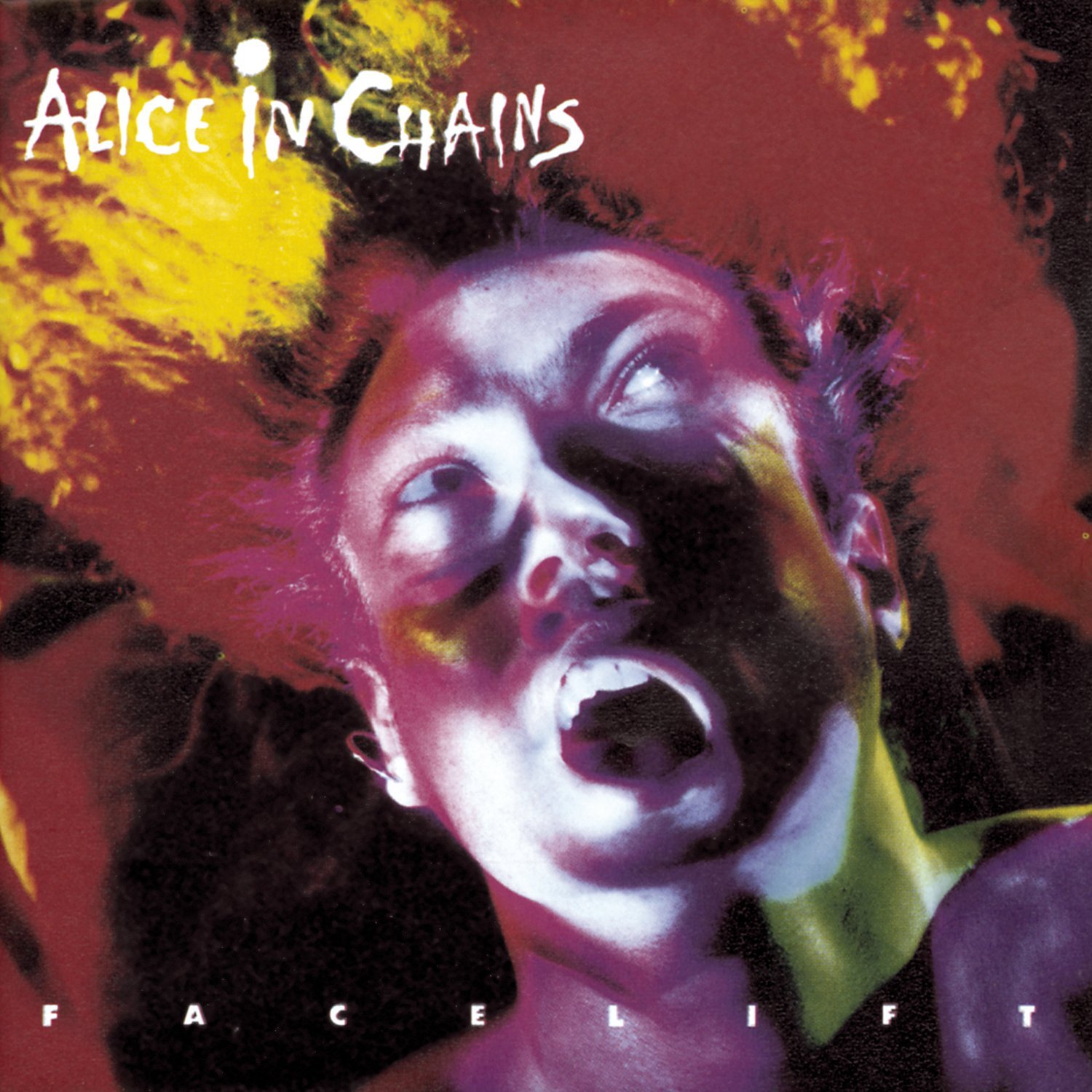
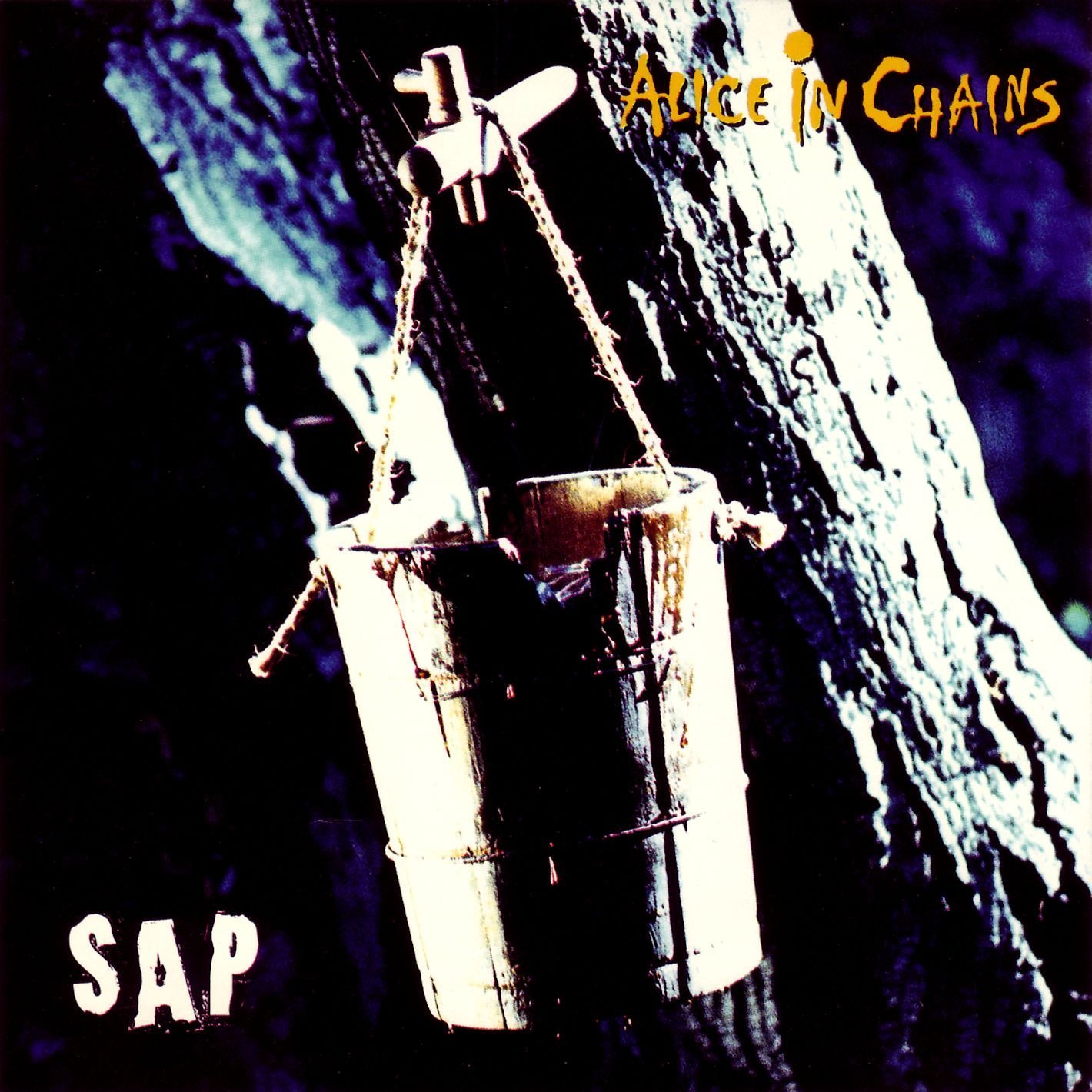


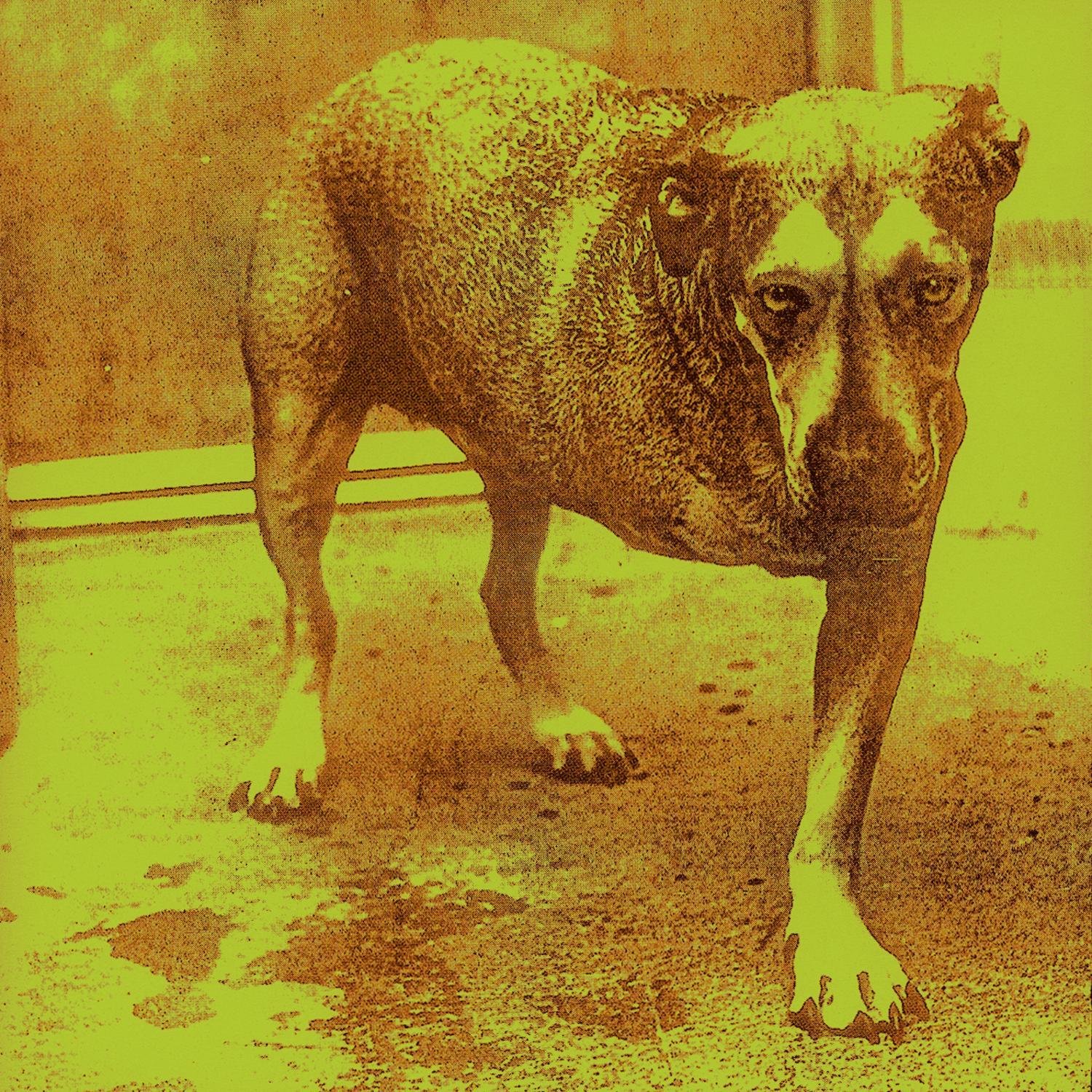


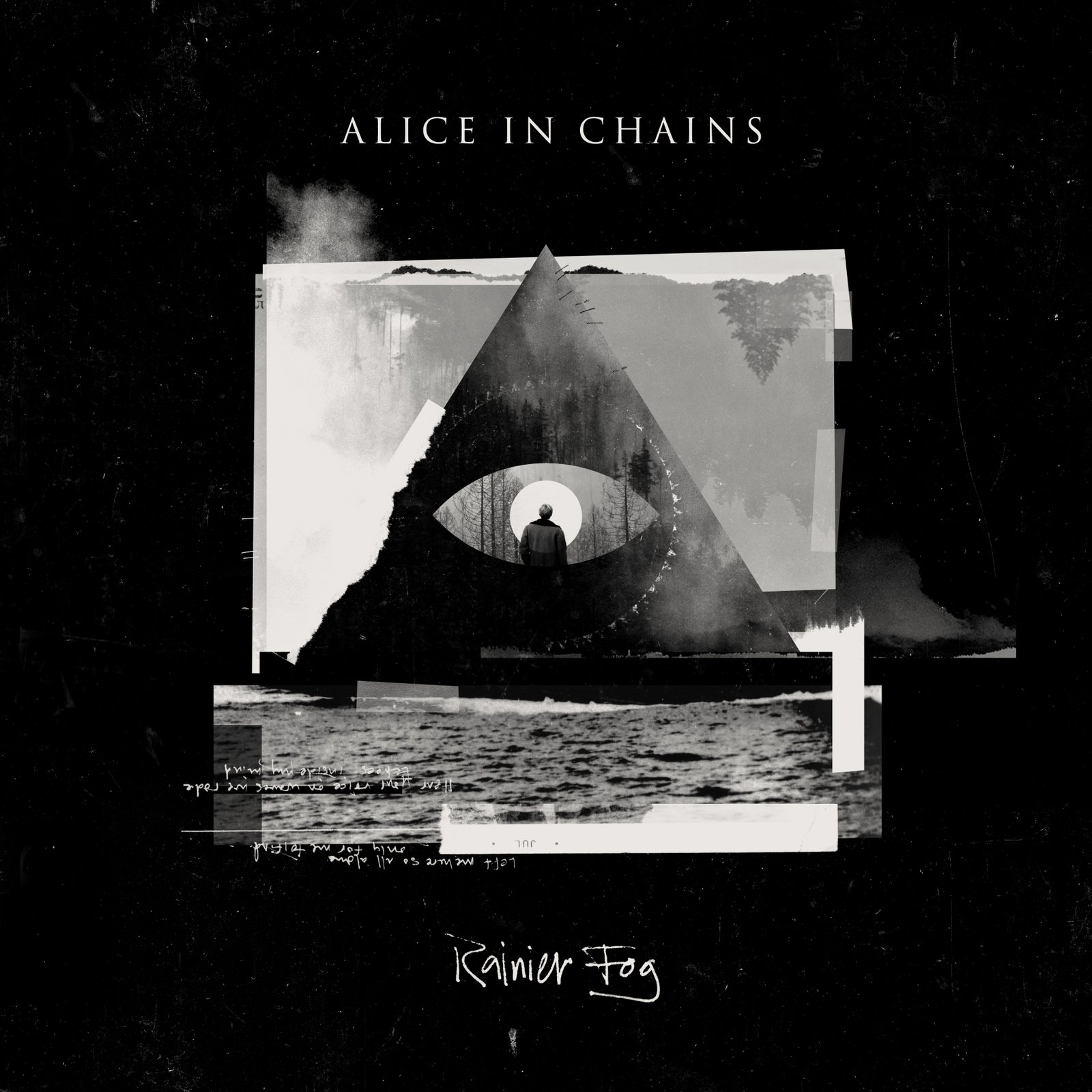
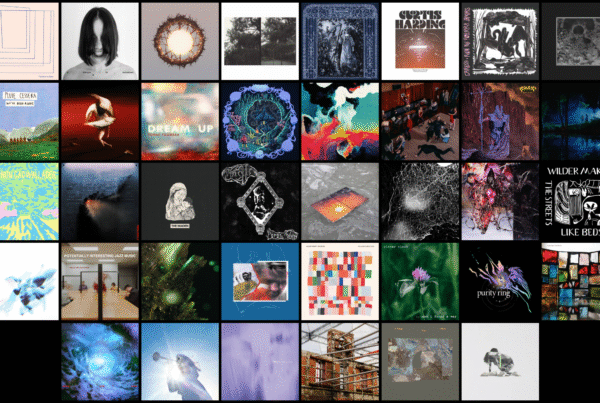
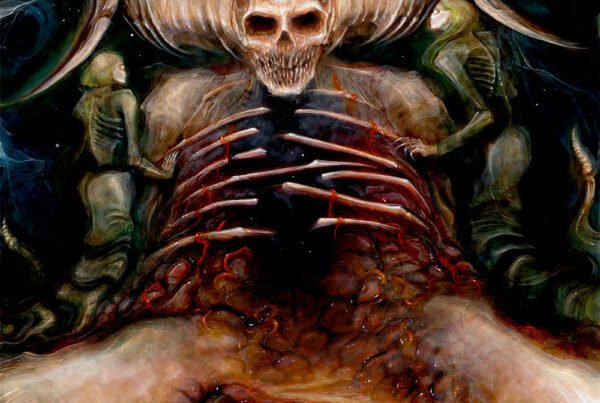
David Rodriguez. I just wanted to take the time and thank you for an excellent Alice In Chains article. I went to high school with Mike Starr and to see the rise of AIC was a joy to watch then almost as fast, their fall was heartbreaking. You stirred up some emotions I haven’t felt in 20 years. Time to put my AIC discography on shuffle for the day. Layne and Mike will always live on through the music.
Rick, thank you so much for your comment! It honestly made my day. We love being able to share what we’re passionate about and have people resonate with it. As you can see, I’m pretty passionate about AIC. I think I’ll play them a bit tonight as well. Thanks again and enjoy your weekend!
Great write up for a great band! One of those rare discographies that doesn’t have a single bad album. My personal favorites are actually Alice In Chains and The Devil Put Dinosaurs Here, I guess I like my Alice on the more experimental side of things. Both albums perhaps lack the immediate appeal of some of the other albums with their enormous hit songs, but they have a pervasive atmosphere that makes them work so well as albums on the whole.
All those tags and you left out William DuVall.